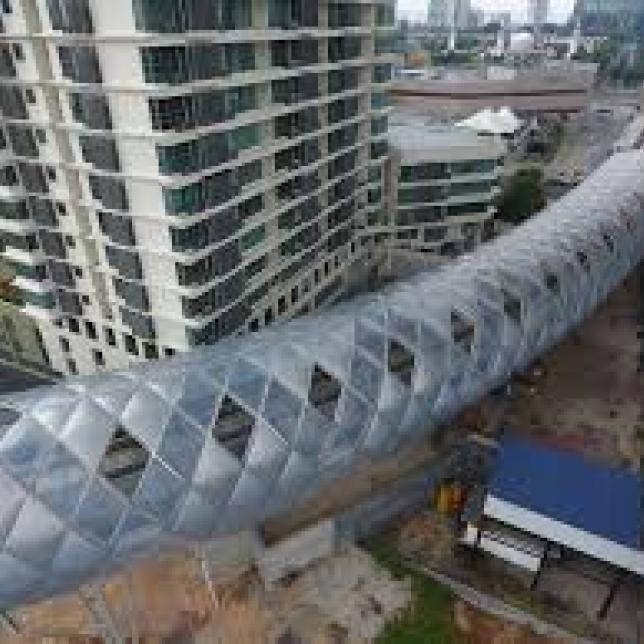ETFE skylight - etfe skylight - Ptefe skylight
WHAT IS ETFE? Ethylene Tetrafluoroethylene (ETFE) is a fluorine-based plastic polymer that offers a creative and lightweight alternative to glass. Developed over 40 years ago by DuPont, ETFE has similar light transmission to glass, but at just 1% of the weight. With a lifespan of over 30 years and excellent weathering properties, ETFE film is becoming the material of choice for a outdoor and outdoor/indoor spaces in a variety of climates. An ETFE cushion application, using multiple layers of ETFE with air-filled pneumatic cavities, works extremely well for fully enclosed thermal envelopes. HOW IS ETFE USED? Single-layer ETFE: ETFE raw granulate is extruded into a single layer of film or foil. The film is tensioned on a lightweight aluminum framing. ETFE Cushions: Either two or three layers of ETFE film are layered with a “cushion” of air between each later. The resulting ETFE cushions are tensioned on lightweight aluminum structures. Because of their thermal insulation and structural stability, ETFE cushions are ideal for projects in cold weather locations. Where necessary, the project design can incorporate sensors that will trigger additional air inflation in the face of additional wind or snow load. ETFE cushions can also be referred to as “double-layer ETFE” or “triple-layer ETFE.” WHAT IS ETFE USED FOR?Replacement for glazingRoofs and roofingOutdoor-indoor spaces\Covered walkwaysWindowsSkylightsFacade panelsGreenhousesAgricultural centersPneumatic panels for thermal enclosuresCold weather sitesBlast or earthquake prone sites WHAT ARE THE ADVANTAGES OF ETFE? ETFE has many benefits, ranging from environmental sustainability to creative design options. Durability benefits of ETFE 1% the weight of glass and typically costs 40%-50% less than traditional glass structuresSupporting structure can be lightweight because material is lightweightWorking temperature range of -300 F to 300 F/-185 C to 150 CAccelerated weathering test of 30 years’ exposure showed almost no signs of deteriorationThe oldest ETFE structure is in Europe and is approaching 40 years old Environmental benefits of ETFE ETFE is 100% recyclableETFE from previous projects can be reused in new projectsReduces heat and solar gainExcellent shading properties with fritted ETFE to reduce solar heat gainThe ETFE manufacturing process requires reduced materials and energyETFE cushions provide thermal performance up to 3 to 7 R-value for enclosed envelopes Maintenance benefits of ETFE High corrosion resistanceResistant to chemicals, electricity, and radiationSelf-cleaning, due to its non-stick surfaceTears can be repaired with patches and panels, removing the need to replace the entire ETFE film Design benefits of ETFE FlexibleCan be stretched up to 3x and remain taut with variation in sizeCan be shaped into curvaturesCan have multiple, movable layersCan incorporate LED lighting and flexible photovoltaic cells for dynamic lighting effectsStandard and custom printing optionsA metallic based and reflective frit can be applied for highly dramatic effects when underlitAcoustic transmission of approximately 70%Can be designed to be reactive to the environmentLighting benefits of ETFEUp to 95% transparentFacilitates transmission of natural lightLight is dispersed and scattered, reducing heat and solar gain with fritted ETFETransmits UV light without incurring damage from UV rays to the ETFEGreat for landscaping, because it does not impede the UV rays needed for plant growth Safety benefits of ETFE Maintains strength in wide temperature variancesRelatively high melting temperature of approximately 500 F/260 C)Self-extinguishing in case of firePasses ASTM E 84, Class “A” material
